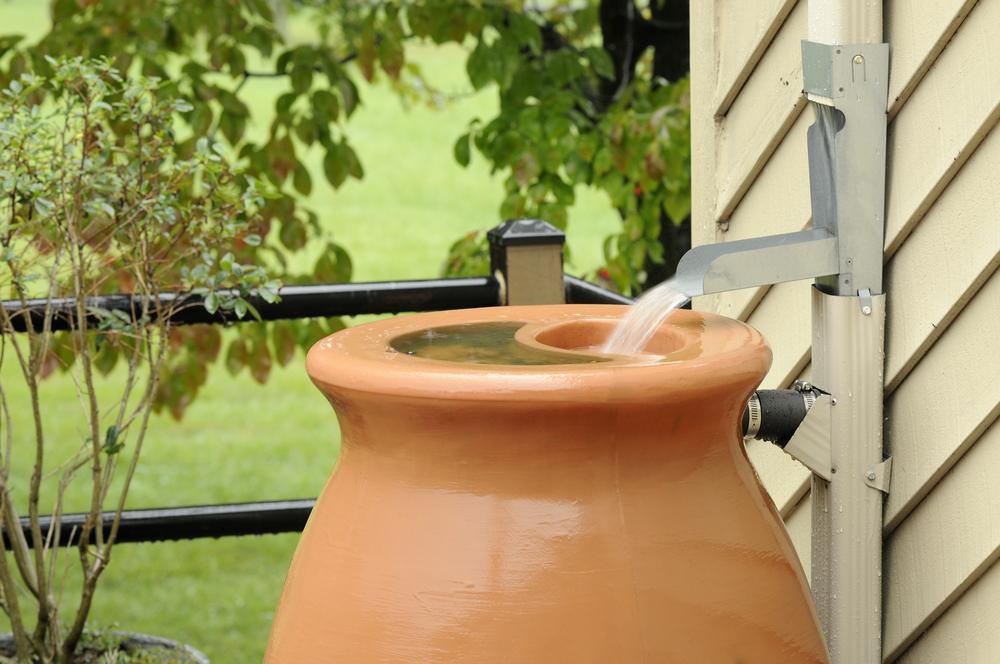Catch the Rain
Water your garden—for free. Set up a few barrels and catch the rain. Rain barrels can provide hundreds of gallons of fresh, clean water for your garden.
Your Impact
Action Steps & Tips
Introduction

Did you know you can collect up to 300 gallons of water from the roof of a 1,000 square foot house with just ½ an inch of rain? That is great news considering the average American home uses up to 100 gallons or more of water per day to water lawns and gardens. Rain barrels can help with outdoor watering needs while saving water and money!
It’s easy to add rain barrels to your home. Rain barrels connect to your rain gutter downspout and catch the rainwater runoff from your roof. A filter or debris screen helps keep the water clean and a hose connection or spout makes it easy to use the water you collect. Connect a few rain barrels together or install a larger capacity water cistern to collect even more water.
Rainwater is not safe for human (or pet) consumption! It is only suitable for outdoor uses, like watering your garden, washing cars or pets, or flushing toilets. The most common use for water from rain barrels is watering by hand or supporting irrigation systems with a more complex setup.
Collecting rainwater:
-
Saves precious water resources
-
Provides free water for your garden
-
Saves money
1Make a plan
Decide on the number and size of barrels. First, decide how much water you want to collect. To estimate, with 1 inch of rain you can collect about ½ a gallon of water for each square foot of roof surface. Each downspout only provides water for a portion of your roof, so consider this in your estimation.
Decide what size and how many rain barrels you need. Most rain barrels hold 30-100 gallons. For sizing, a standard 60-gallon rain barrel is about 3.5ft high and 2ft wide and deep. If you want to collect more water, there are models that allow you to connect a few rain barrels together. Or you can consider installing a larger water cistern. If you are not sure, try starting with one barrel and see how it goes!
Decide where to place the barrels. Rain barrels connect to your rain gutter downspout and catch the rain coming from your roof. The best plan is to choose the gutter closest to the area where you want to use the water. Also, check to see if there is room around the downspout you are considering.
Purchase your rain barrels. Most basic rain barrels run about $100-$200 per barrel. A larger or more complicated installation will run more.
2Install your barrels & start watering!
Connect your rain barrel and start watering! Here are a few tips:
Install DIY? Installing a rain barrel can be a simple DIY (do-it-yourself) project if you are comfortable using tools to cut your gutter and taking steps to make sure your rain barrel is secure and working properly. Check out this DIY guide for more information.
However, if you are not ready to take this on or are considering a larger advanced rainwater catchment system, consider hiring a professional.
Start watering! Congrats! Now you are ready to put your barrel to use. Simply fill your watering can or attach a hose to the barrel and start watering.
Maintain your barrel. It is important to check your rain barrel regularly to make sure it is in good condition. Standing water can be a breeding ground for mosquitoes, so keep your rain barrel covered and drain it regularly. Keep your gutters clean and use screens to prevent leaf debris from entering the barrel. Empty your barrel before storms and give it a good cleaning at least once a year.

